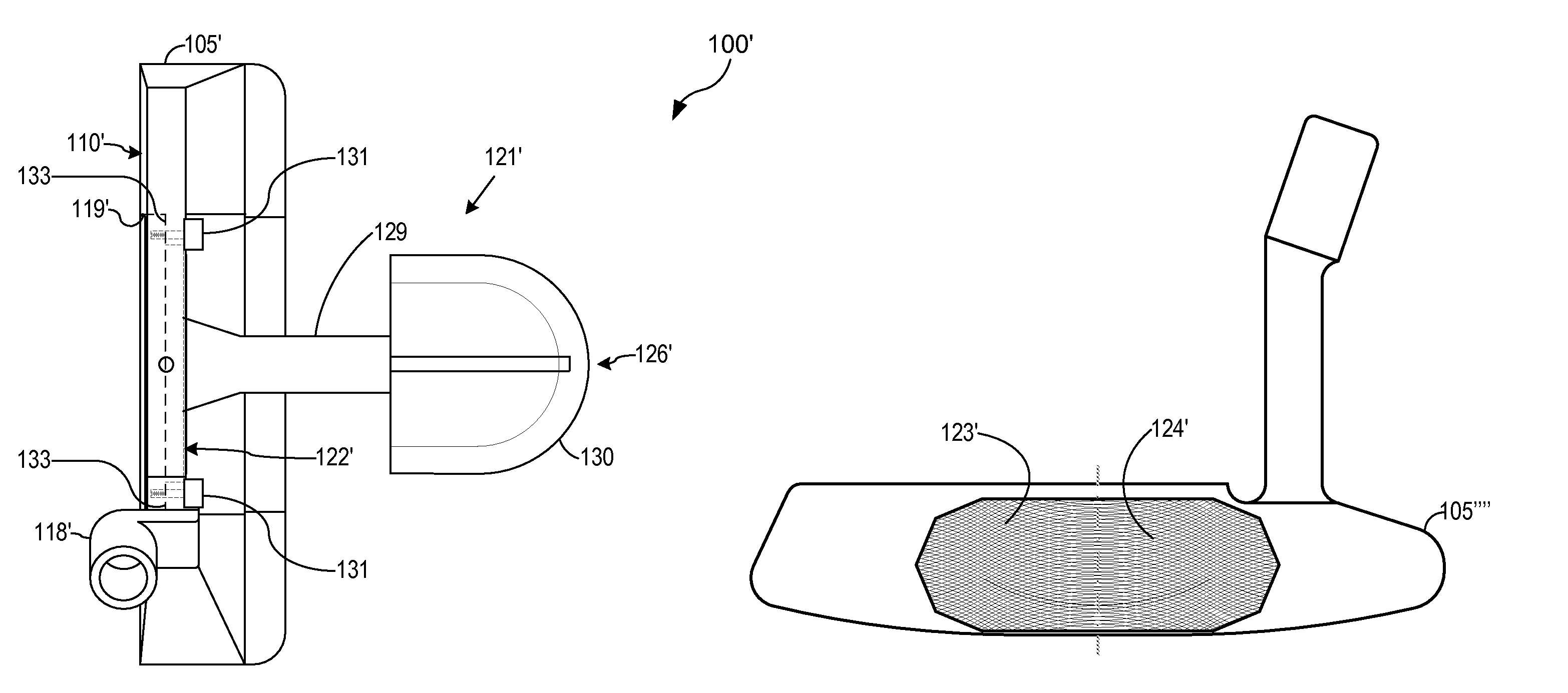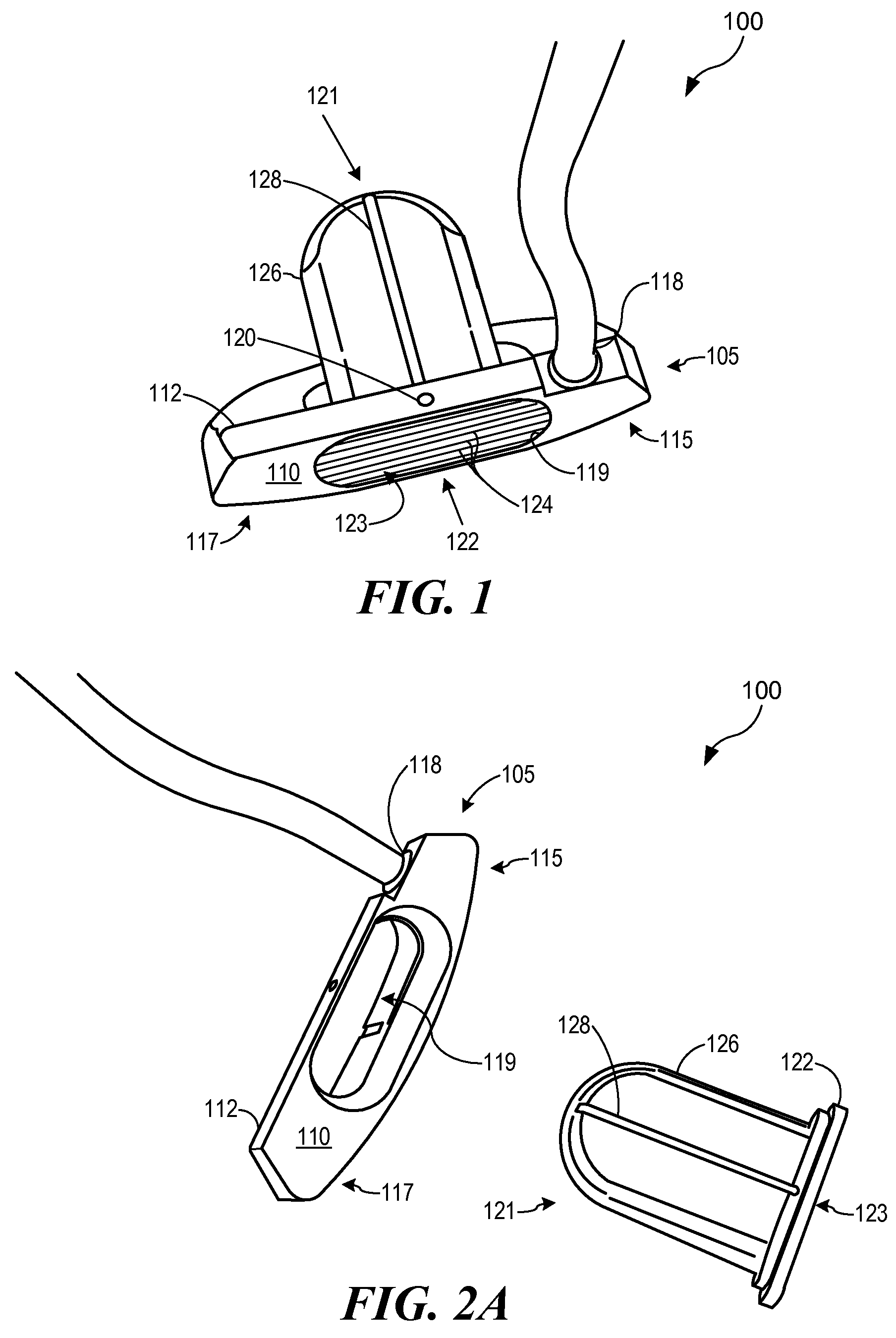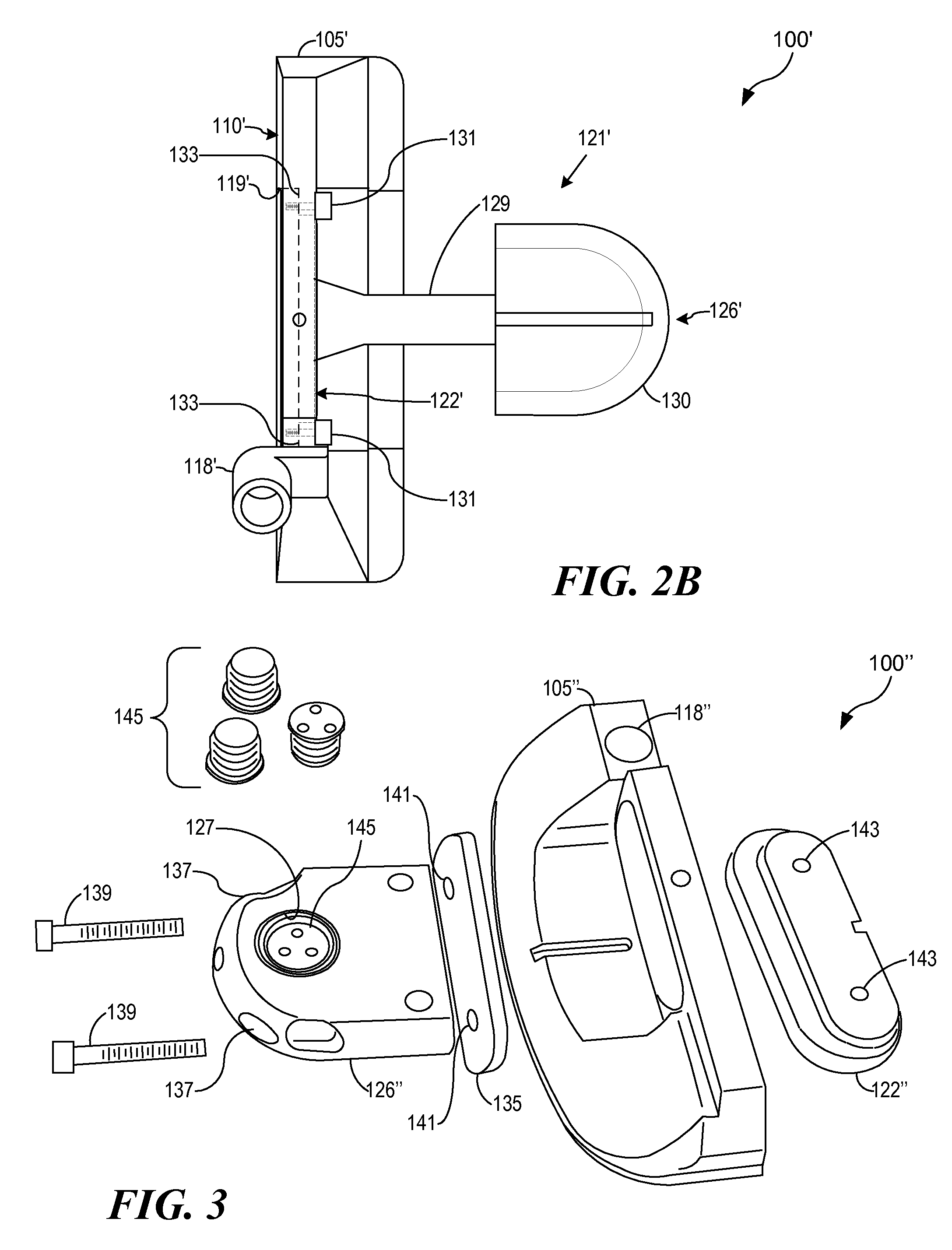Multi-piece putter head having an insert
a multi-piece, insert technology, applied in the field of golf clubs, can solve the problems of large mallet heads that are not visually appealing to many golfers, putters that are pushed off the stroke plane on the backstroke, and can not be easily controlled during manufacturing, so as to avoid or minimize disadvantages, the force applied by threaded fasteners can be large, and the effect of easy control
- Summary
- Abstract
- Description
- Claims
- Application Information
AI Technical Summary
Benefits of technology
Problems solved by technology
Method used
Image
Examples
Embodiment Construction
[0039]Referring to FIG. 1 of the drawings, the reference numeral 100 generally designates a golf club head embodying features of the present invention. The golf club head 100 may generally comprise a base head portion 105 having a face portion 110, a top-line portion 112, a heel portion 115, a toe portion 117 and a hosel portion 118. The golf club head 100 is shown in a generally finished state and includes an optional alignment mark 120. In this embodiment, the face portion 110 has an opening 119 through it, which opening 119 includes a through-head insert 121, which includes a front insert portion 122 that is preferably inserted flush with the surrounding face 110, and can be at least partially retained in place by a press-fit or other interference fit, but also in addition or in lieu thereof by other securing means. Through-head insert 121 includes a rearwardly extending portion 126 extending beyond that back of base head portion 105, and can optionally include alignment indicia ...
PUM
 Login to View More
Login to View More Abstract
Description
Claims
Application Information
 Login to View More
Login to View More - R&D
- Intellectual Property
- Life Sciences
- Materials
- Tech Scout
- Unparalleled Data Quality
- Higher Quality Content
- 60% Fewer Hallucinations
Browse by: Latest US Patents, China's latest patents, Technical Efficacy Thesaurus, Application Domain, Technology Topic, Popular Technical Reports.
© 2025 PatSnap. All rights reserved.Legal|Privacy policy|Modern Slavery Act Transparency Statement|Sitemap|About US| Contact US: help@patsnap.com



